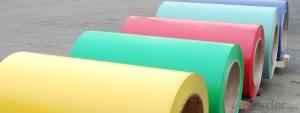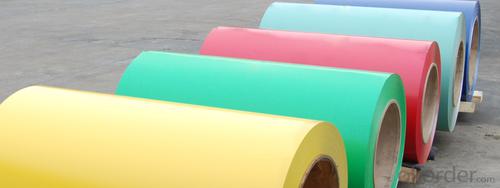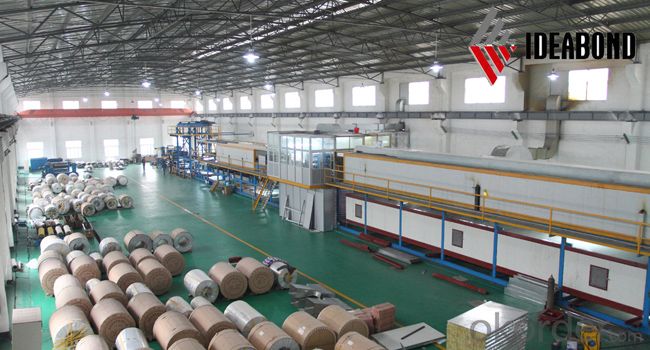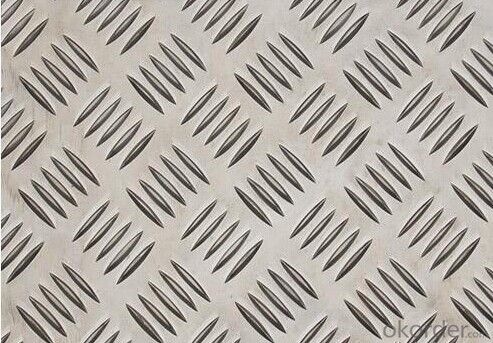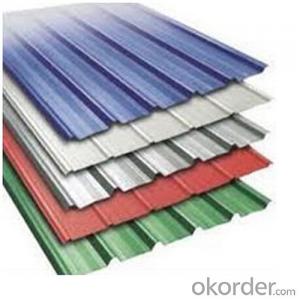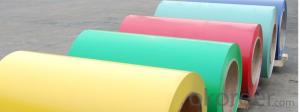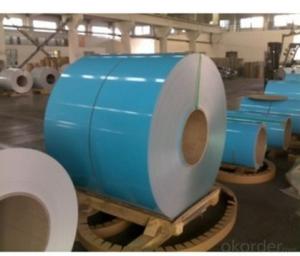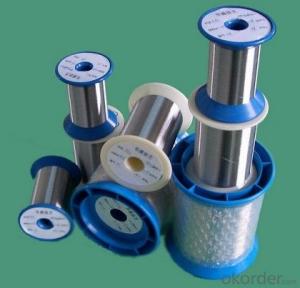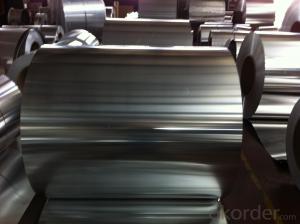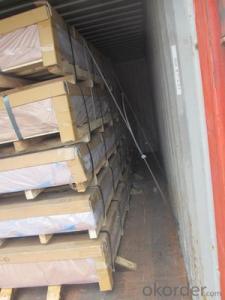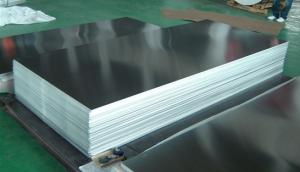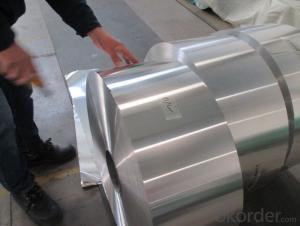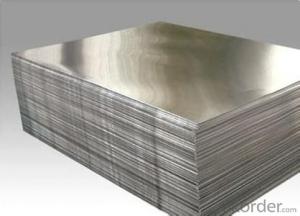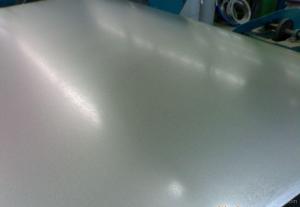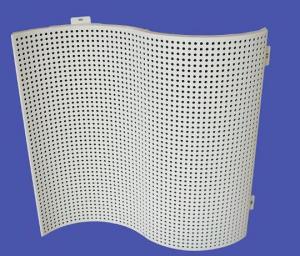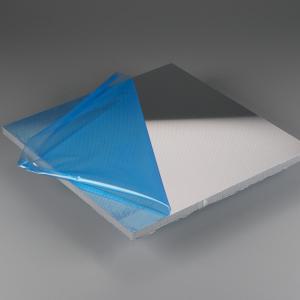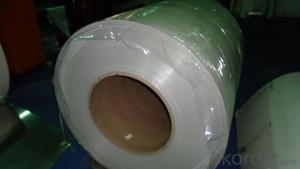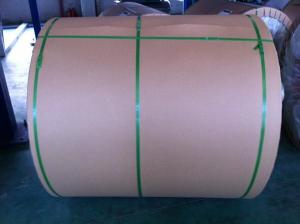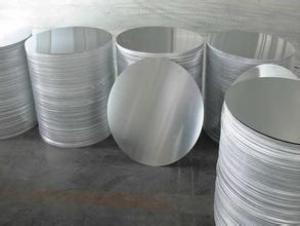Aluminum Alloy Sheets - AA1200, H14, 0.68mm Thickness
- Loading Port:
- Shanghai
- Payment Terms:
- TT OR LC
- Min Order Qty:
- 5 m.t.
- Supply Capability:
- 500000 m.t./month
OKorder Service Pledge
OKorder Financial Service
You Might Also Like
Specification
1.Structure of Aluminum Coils Colored Coated Description
Aluminum coils color coated are of a wide range of colors, which give wonderful appearance no matter in residential and commercial constructions or great exhibition centers.
Aluminum coils color coated have been widely used in the fields of construction and decoration, electronic applications, lighting decoration, air-condition air pipes, sandwich panels and drainages etc.
2.Main Features of the Aluminum Coils Colored Coated
• Superior quality of raw material
• Reasonable and stable chemical composition
• Accurate tolerance
• Goode mechanical property
4.Aluminum Coils Colored Coated SpecificationCharacteristic:
1)Excellent weather-proof durability
2)Anti-ultraviolet
3)High erosion resistance
4)Stable color and gloss
5)Good mechanical processing performance
6)Abrasion resistance
7)Anti-impact
8)High flexibility
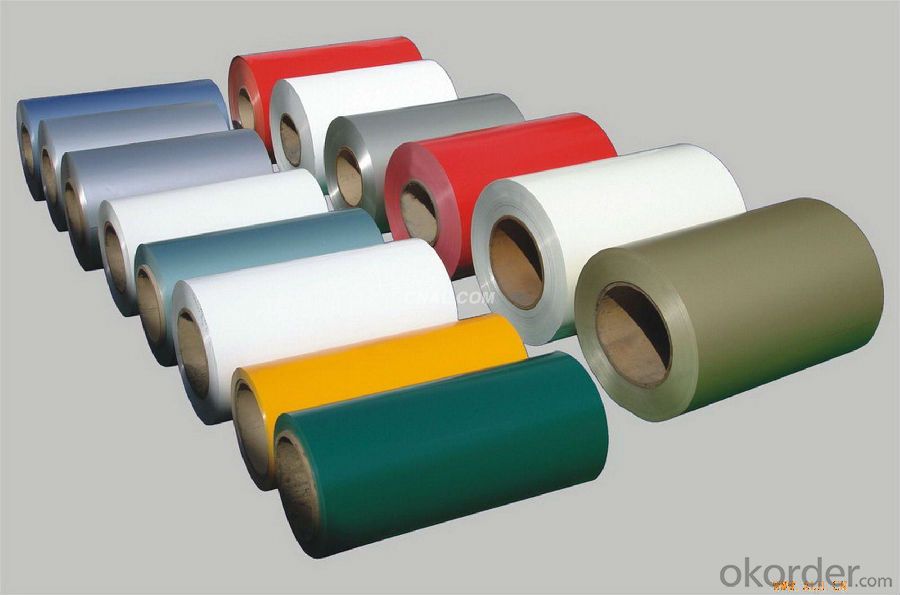
- Q: I've created a sculpture out of aluminum foil, but it's pretty flimsy. What can I paint or cover it with that would harden and support it? I was thinking a resin or something, but I have no experience with resins or epoxies... Any suggestions?
- Aluminum Foil Sculptures
- Q: Why must the aluminum oxide be electrolyzed in a molten cryolite solution?
- To electrolyse aluminium oxide, it has to be molten. However, the melting point of Al2O3 is extremely high ( 1000°C), and that would make the electrolysis very inefficient. However, Al2O3 dissolves in cryolite at much lower temperatures (lower than 900°C), which makes it a much more viable process.
- Q: What are the specific rules or codes that govern the use of aluminum sheets in residential construction?
- <p>Yes, there are special regulations related to using aluminum sheets in residential buildings. These regulations can vary by country, state, or municipality, but generally, they cover aspects such as material standards, fire resistance, structural integrity, and energy efficiency. For example, aluminum sheets must meet specific thickness and strength requirements to ensure structural safety. They must also comply with fire codes, which may require certain fire-resistant coatings or treatments. Additionally, energy codes may dictate the insulation value of aluminum sheets used in walls or roofs to improve thermal performance. It's crucial to consult local building codes and regulations to ensure compliance when using aluminum sheets in residential construction.</p>
- Q: Can aluminum sheets be easily shaped or bent?
- Yes, aluminum sheets can be easily shaped or bent. Aluminum is known for its excellent malleability and ductility, which allows it to be easily formed into various shapes and bends. It can be manipulated using a variety of techniques such as rolling, pressing, or even using hand tools. The malleability of aluminum makes it a preferred choice in industries such as automotive, aerospace, and construction, where it is commonly used in the production of parts and structures that require complex shapes and bends. Additionally, aluminum's lightweight and corrosion-resistant properties further contribute to its suitability for shaping and bending processes.
- Q: Can 101 aluminum sheets be used in the production of nameplates or tags?
- Certainly! Nameplates or tags can be produced using 101 aluminum sheets. The durability, lightweight nature, and corrosion resistance of aluminum make it a popular material choice for such items. The 101 aluminum alloy, which is a commercially pure aluminum, offers excellent formability and workability. This makes it suitable for various manufacturing processes like stamping, engraving, or etching. It can be easily cut, shaped, and customized to create nameplates or tags with clear and precise markings. Moreover, aluminum's ability to withstand harsh environments and its appealing appearance make it preferred across industries like automotive, aerospace, electronics, and signage. Hence, 101 aluminum sheets are a suitable material for producing nameplates or tags.
- Q: What are the effects of utilizing aluminum sheets on the environment?
- <p>The environmental impact of using aluminum sheets includes both positive and negative aspects. On the positive side, aluminum is recyclable, and its use in construction and manufacturing can reduce the need for more energy-intensive materials like steel. However, the production process of aluminum is energy-intensive and generates greenhouse gases, contributing to climate change. Additionally, the extraction of bauxite, the primary source of aluminum, can lead to deforestation and habitat destruction. Despite these concerns, aluminum's lightweight nature can reduce energy consumption in transportation, and its durability can extend the lifespan of products, reducing waste. Overall, the environmental impact depends on the balance between these factors and the specific context of use.</p>
- Q: What are the different types of coatings available for aluminum sheets?
- Aluminum sheets come in various coatings, each with its own unique properties and advantages. 1. Anodized Coating: To create an anodized coating, the aluminum sheet is immersed in an electrolyte bath and an electric current is passed through it. This process forms a durable and corrosion-resistant oxide layer on the sheet's surface. Anodized coatings can be found in different colors and provide excellent resistance to abrasion. 2. Powder Coating: In powder coating, a dry powder is applied to the aluminum sheet and then heated to cure it. This method results in a durable, uniform, and visually appealing finish. Powder coatings are available in a wide range of colors and textures and exhibit excellent resistance to chipping, scratching, and UV fading. 3. Paint Coating: Liquid paint can be used to coat aluminum sheets, offering versatility in terms of color and finish options. Paint coatings provide good resistance against weathering, impacts, and chemicals, although they may not be as long-lasting as anodized or powder coatings. 4. Cladding: Cladding involves bonding a layer of a different metal, such as stainless steel or copper, to the surface of the aluminum sheet. This process enhances protection, improves aesthetic appeal, and enhances the sheet's mechanical properties. 5. Laminating: Laminating consists of bonding a protective layer, such as a film or sheet, to the surface of the aluminum sheet. This coating method offers protection against abrasion, UV rays, and chemicals, while also providing decorative finishes. 6. Organic Coating: Organic coatings, such as polyurethane or acrylic coatings, are applied to aluminum sheets to protect against corrosion, weathering, and chemical exposure. These coatings offer flexibility, good adhesion, and a wide array of color choices. The choice of coating for aluminum sheets depends on specific requirements, including durability, corrosion resistance, aesthetic appeal, and cost-effectiveness.
- Q: Can aluminum sheets be used for missile components?
- Yes, aluminum sheets can be used for missile components. Aluminum is a commonly used material in aerospace applications due to its lightweight, high strength, and good corrosion resistance. It is often used for structural components and skin panels in missiles and other aerospace vehicles.
- Q: Can aluminum sheets be painted?
- Yes, aluminum sheets can be painted. However, the process of painting aluminum sheets may require some preparation to ensure proper adhesion and durability of the paint. The most important step is to clean the surface of the aluminum sheet thoroughly to remove any dirt, grease, or corrosion. This can be done using a mild detergent and water or a specialized aluminum cleaner. After cleaning, the surface should be dried completely before painting. To improve the paint adhesion, it is recommended to apply a primer specifically designed for use on aluminum. The primer will create a bond between the aluminum surface and the paint, ensuring better adhesion and longevity of the paint job. After the primer has dried, a suitable paint can be applied to the aluminum sheet. It is important to choose a paint that is compatible with aluminum and provides good adhesion and weather resistance. Acrylic or epoxy-based paints are commonly used for painting aluminum. Before painting, it is advisable to test a small inconspicuous area to ensure that the paint adheres properly and achieves the desired finish. Additionally, it is important to follow the manufacturer's instructions for the specific paint and primer being used, including proper drying times and application techniques. Overall, while aluminum sheets can be painted, it is essential to properly prepare the surface, use suitable primer and paint, and follow the recommended procedures to achieve a durable and aesthetically pleasing paint finish.
- Q: How do aluminum sheets compare to steel sheets in terms of strength?
- Aluminum sheets and steel sheets differ in terms of strength. Steel is generally stronger than aluminum, as it has a higher tensile strength, meaning it can withstand greater forces without breaking or deforming. Steel sheets are commonly used in applications that require high strength and durability, such as construction, automotive manufacturing, and aerospace. On the other hand, aluminum sheets offer a good balance between strength and weight. While aluminum is not as strong as steel, it is significantly lighter, which makes it advantageous in certain applications where weight reduction is a priority, such as the manufacturing of aircraft and vehicles. Additionally, aluminum sheets have excellent corrosion resistance, making them suitable for outdoor or marine environments. Ultimately, the choice between aluminum and steel sheets depends on the specific requirements of the application, considering factors like strength, weight, durability, and corrosion resistance.
Send your message to us
Aluminum Alloy Sheets - AA1200, H14, 0.68mm Thickness
- Loading Port:
- Shanghai
- Payment Terms:
- TT OR LC
- Min Order Qty:
- 5 m.t.
- Supply Capability:
- 500000 m.t./month
OKorder Service Pledge
OKorder Financial Service
Similar products
Hot products
Hot Searches
Related keywords
